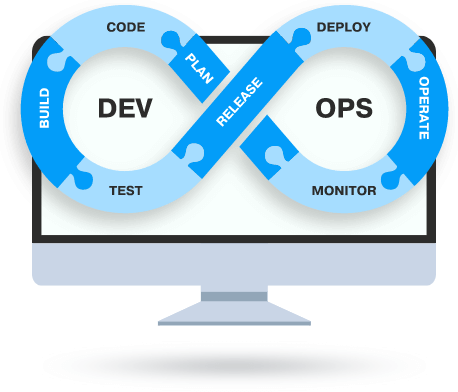Introduction
In today’s fast-paced and highly competitive digital landscape, businesses are constantly seeking ways to accelerate their software development and delivery processes. This is where DevOps comes into play. DevOps, short for Development and Operations, is a methodology that combines software development and IT operations to streamline the entire software development lifecycle. By breaking down silos and fostering collaboration between development, operations, and quality assurance teams, DevOps has proven to be a game-changer in improving the speed, efficiency, and reliability of software delivery. In this comprehensive blog, we will take a deep dive into the world of DevOps, exploring its methodologies, tools, and best practices.
Understanding the DevOps Methodology: A Comprehensive Overview
The DevOps methodology is a set of practices that help organizations innovate faster by automating and streamlining their software development and infrastructure management processes. One fundamental practice of DevOps is performing frequent but small updates. This approach makes each deployment less risky and allows teams to address bugs faster. Get a clear idea of the DevOps strategies & its major principles with the help of advanced DevOps Training In Hyderabad at Kelly Technologies
To enable quicker innovation, organizations might adopt a microservices architecture. This architecture breaks applications into independent components, with each service scoped to a single purpose or function. By decoupling large, complex systems into simple, independent projects, organizations can move more quickly. When each service is paired with small, agile teams who take ownership of each service, innovation can be accelerated.
This is where DevOps practices like continuous integration and continuous delivery come in. These practices allow organizations to deliver updates rapidly in a safe and reliable manner. By automating the integration and testing of code changes and deploying them to production environments, organizations can reduce the risk of errors and streamline the delivery process.
Implementing an Effective CI/CD Pipeline with AWS CodeCommit and CodeDeploy
Implementing a CI/CD pipeline is crucial for efficient and effective software development. In the previous section, we discussed the importance of implementing an effective CI/CD pipeline and how it can benefit organizations. Now, let’s delve deeper into how AWS CodeCommit and CodeDeploy can be utilized to create a seamless CI/CD pipeline.
AWS CodeCommit is a fully managed source control service that allows teams to securely store and manage their code repositories. It provides a reliable and scalable solution for version control, enabling teams to collaborate and track changes to their codebase. By integrating CodeCommit and CodeDeploy, teams can automate the entire process of building, testing, and deploying their applications.
Monitoring Systems for DevOps: Tools and Best Practices
Monitoring systems play a crucial role in the successful implementation of DevOps practices. These systems ensure that software development and deployment processes are on the right path without any adverse effects on workflow and teams. With the increasing complexity of automating infrastructure, integration, testing, packaging, and deployment in the cloud, DevOps monitoring tools become essential for managing and optimizing these processes.
One of the key benefits of DevOps monitoring is the transparency and control it provides over the app development cycle and IT operations. By gaining insights into the performance and health of the code, developers and IT architects can make informed decisions and take proactive steps to address any issues. This enables organizations to gather valuable feedback and make necessary optimizations to enhance the customer experience. Get a clear idea of the DevOps strategies & its major principles with the help of advanced DevOps Course In Hyderabad at Kelly Technologies
To ensure a proper implementation of DevOps monitoring, it is important to follow best practices. This includes careful and continuous planning, building, testing, and deployment at each stage of the delivery pipeline. By collecting and evaluating all necessary information and data, organizations can gain a comprehensive understanding of their processes and identify areas for improvement. Data analysis, determining milestones, and evaluating process failures from data history can provide valuable insights for smooth operations.
Scaling DevOps with Azure: An Introduction to Azure DevOps and Azure Pipelines
Scaling DevOps practices is essential for organizations looking to streamline their development and deployment processes. Azure DevOps provides a comprehensive solution for effectively scaling DevOps operations.
A project in Azure DevOps serves as a central hub for planning, tracking progress, and collaborating on software solutions. For smaller organizations, the automatically created project and team are usually sufficient. This allows teams to configure their tools in ways that work best for them and complete administrative tasks at appropriate levels, promoting team autonomy and organizational alignment.
Conclusion
This article in the techtimesmedia must have given you clear idea about embracing DevOps is not just a trend. By implementing an effective CI/CD pipeline, leveraging monitoring systems and observability tools, and scaling DevOps with cloud platforms like Azure, organizations can achieve faster software development cycles, improved collaboration, and enhanced code performance and health.









